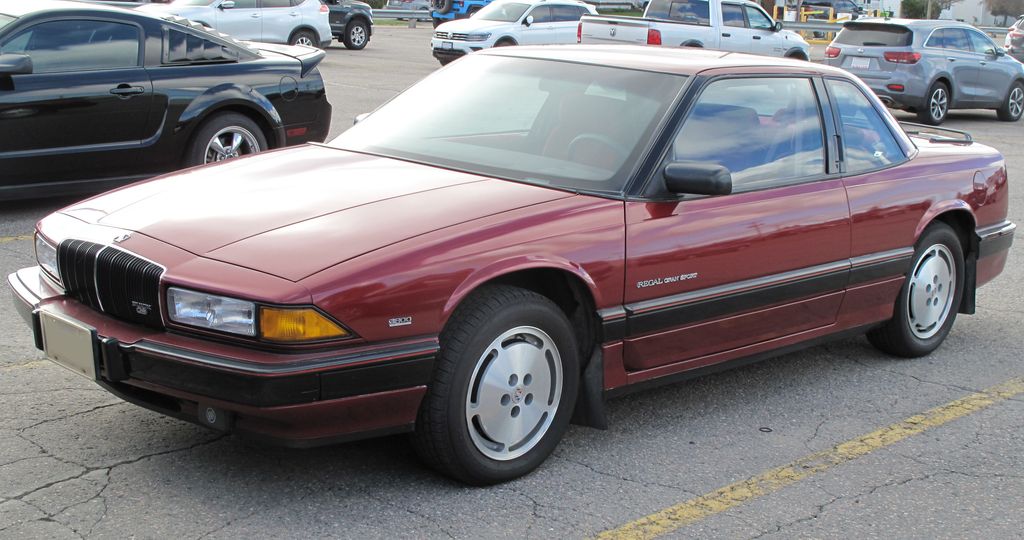
The 1990s often conjures diverse images for automotive enthusiasts. Some might recall it as a period of transition, grappling with new regulations and evolving design philosophies. Yet, for those deeply immersed in the world of American iron, this decade proved profoundly pivotal for U.S. automakers, expertly blending electronic sophistication with a fervent, revived passion for raw horsepower.
From the audacious turbocharged trucks that defied conventional wisdom to the meticulously refined muscle coupes that carried forward a proud legacy, the era managed a delicate yet impactful balancing act. It was a time when performance metrics, increasingly stringent emissions compliance, and fresh, modern design cues converged to forge an entirely new wave of collectible icons. These weren’t just cars; they were emblems of their time, each masterfully bridging the gap between the cherished classic muscle heritage and the burgeoning contemporary technology.
While the spotlight for rare American cars often shines brightly on the roaring 1960s or the adventurous 1970s, the 1990s quietly, yet powerfully, etched its own indelible mark. It’s a testament to innovation and daring engineering that a decade often overlooked by the casual observer yielded such a fascinating array of vehicles. Join us as we dive into five of these extraordinary machines, each a unique piece of American automotive history, showcasing how the 90s truly brought forth a new dawn of American muscle and innovation.
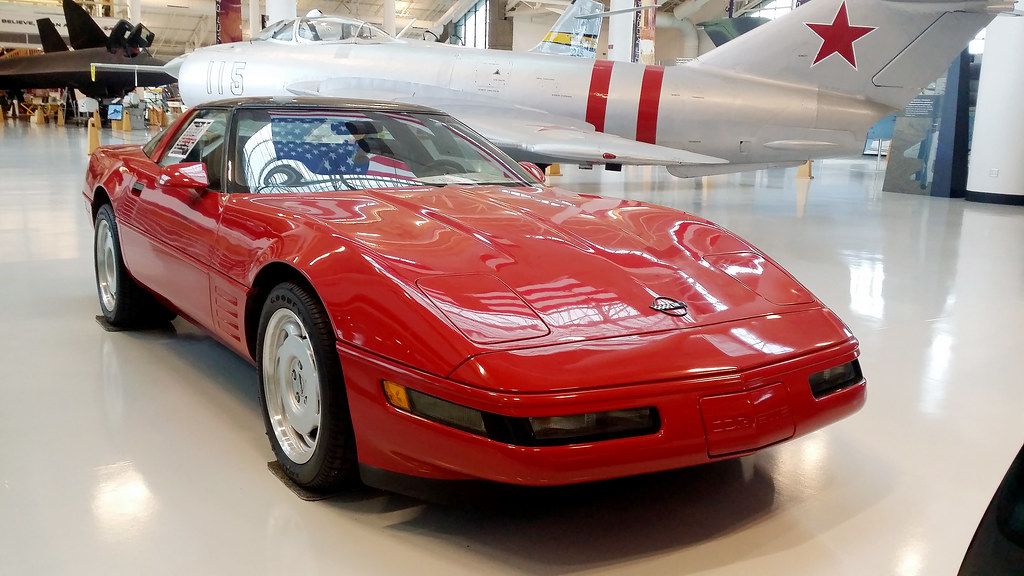
1. **1990–1995 Chevrolet Corvette ZR-1**Nicknamed the “King of the Hill” internally, the 1990–1995 Chevrolet Corvette ZR-1 was a monumental collaboration with Lotus that fundamentally shattered preconceived notions of the Corvette’s performance ceiling. This high-performance variant of the already-impressive C4 generation Corvette introduced the groundbreaking LT5 engine, a dual overhead cam (DOHC) V8 that was nothing short of revolutionary for American sports cars of its time. It was an engineering marvel, pushing 375 horsepower initially, and then an even more formidable 405 horsepower later in 1993, making it the first American car to exceed 400 horsepower.
Beyond its sheer power, the ZR-1 was a technological tour de force. It featured advanced Multi-Port Fuel Injection and an aluminum block, which significantly reduced weight and further enhanced its dynamic capabilities. Capable of sprinting from 0 to 60 mph in about 4.5 seconds, the ZR-1 boasted supercar figures that put it squarely in contention with the best European and Asian cars of the early 1990s. This combination of brutal power, cutting-edge technology, and sleek styling made it an undeniable standout in the global sports car market, cementing its status as one of the top American cars from the 90s.
With fewer than 7,000 units built in total, the ZR-1 always maintained a coveted limited-production aura. Its existence reasserted the Corvette’s global reputation, proving that American engineering could blend electronic fuel injection mastery with a chassis sophisticated enough to hold its own on the world’s racetracks. Values for these pioneering DOHC V8 machines have seen a significant rise in auction interest, as collectors increasingly acknowledge its pivotal role in the American performance revival.
Car Model Information: 2023 GMC Sierra 1500 Denali
Categories: All set index articles, Articles with short description, Set index articles, Short description with empty Wikidata description
Summary: ZR1, (or ZR-1), is a designation that has been used on several different generational models of the Chevrolet Corvette.
For the 3rd generation (C3), the ZR1 & ZR2 were special engine packages. Only 53 of these packages were optioned during the 1970 to 1972 model years.
For the 4th generation (C4), the ZR1 was the top-tier package that was available from 1990 to 1995, with a special engine designed in partnership with Lotus, after General Motors acquired Group Lotus, and with the objective of creating the world’s fastest production car. Other upgrades included steering, braking, specially designed Goodyear tires, and changes to body fascia.
For the 6th generation (C6), the ZR1 was a top-tier model package, the centerpiece of which was a new supercharged engine, with the supercharger visible through a window in the hood. There were numerous other upgrades to virtually every aspect of the car.
For the 7th generation (C7), the ZR1 was again the top-tier variant available, beginning in 2019. While improvements were made and there were significant changes to the body styling, the engine retained the same displacement and was again supercharged, with the unit visible through a hood window.
For the 8th generation (C8), the ZR1 was again on offer as the top variant for 2025, but major changes had been made to the car, not the least of which was to the Corvette layout, switching from a front mid-engine, rear-wheel-drive layout (FMR) to a rear mid-engine, rear-wheel-drive layout (RMR), moving the engine to the rear for the first time since the Corvette was first introduced 65 years prior. Major changes were also made to the engine’s crankshaft, the displacement was reduced, and in place of the supercharger, the motor now sported a pair of turbochargers. All this combined made for the most powerful engine in the company’s history.
Get more information about: Chevrolet Corvette ZR1
Buying a high-performing used car >>>
Brand: Chevrolet Model: Corvette ZR-1
Price: $61,999 Mileage: 17,877 mi.

2. **1991 GMC Syclone**Long before the proliferation of high-performance SUVs became mainstream, GMC embarked on a truly audacious experiment: the 1991 Syclone. This was no ordinary compact pickup truck; it was a street-focused terror, uniquely fitted with a potent turbocharged V6 engine and a sophisticated full-time all-wheel-drive system. The outcome was an utterly unexpected vehicle that possessed the remarkable ability to embarrass many sports cars at the drag strip, proving that humble workhorses could indeed be transformed into asphalt-shredding machines.
At its heart, the Syclone housed a turbocharged 4.3L V6 engine, churning out a stout 280 horsepower and an impressive 350 lb-ft of torque. This robust power, coupled with its advanced AWD layout, enabled blistering 0-60 mph times that consistently landed in the mid-4-second range. Such performance was nothing short of extraordinary for a pickup truck, especially given the minimal turbo lag and abundant low-end torque that made it incredibly responsive right off the line. It redefined what a truck could be.
With approximately 2,995 units ever produced, the Syclone’s rarity was cemented by its intentionally limited design and the fact that it was deliberately overshadowed by GMC’s more mainstream pickup offerings. It took the concept of a “muscle truck” to a previously unimaginable level, offering a surreal experience of witnessing a unassuming GMC pickup vehicle devour high-performance Porsches on the street. Today, the 1991 GMC Syclone stands as a revered anomaly and a cornerstone in the lore of 1990s American muscle, a true testament to fearless automotive engineering.
Read more about: 15 Rare and Iconic Pickup Trucks Through Automotive History

3. **1992 GMC Typhoon**Building on the unexpected success and sheer audacity of the Syclone, GMC decided to apply the very same turbocharged magic to a compact SUV platform, thus giving birth to the 1992 GMC Typhoon. Debuting just a year after its pickup truck brethren, the Typhoon meticulously shared many of its mechanical underpinnings with the Syclone, effectively forging the blueprint for the high-performance SUV segment well before it became the ubiquitous market force it is today. This visionary approach demonstrated a keen foresight into future automotive trends.
Under the hood, the Typhoon harnessed the identical turbocharged 4.3L V6 engine, producing roughly 280 horsepower, ensuring that its performance capabilities mirrored the Syclone’s thrilling acceleration. Its full-time AWD layout, much like its sibling, provided enhanced traction, enabling impressive 0-60 mph blasts in the 5-second range—a truly remarkable feat for a vehicle typically associated with family hauling duties. This fusion of utility and speed was a game-changer, challenging the conventional perceptions of what an SUV could deliver.
Production of the Typhoon was also limited, with around 4,697 units produced between 1992 and 1993, adding to its collectibility. What set the Typhoon apart slightly was its emphasis on a more comfort-oriented interior, featuring amenities like leather seats and upscale trim, making it a more refined proposition than its Syclone cousin. This unique combination of muscle car power with SUV practicality, coupled with its limited production numbers and significant role in automotive evolution, makes the Typhoon a prime target for collectors seeking something truly offbeat and pioneering in its segment.
Car Model Information: 1992 GMC Jimmy Typhoon
Name: GMC Typhoon
Production: 1992–1993,4697 produced
Manufacturer: GMC (marque)
Class: Mid-size car,Sport utility vehicle
BodyStyle: Sport utility vehicle
Related: GMC Syclone,GMC Jimmy
Engine: Chevrolet 90° V6 engine#Turbocharged LB4 4.3L V6
Transmission: Turbo-Hydramatic#THM700R4 / 4L60 / 4L60E / 4L65E / 4L70E,automatic transmission
Wheelbase: 100.5 in (2553 mm)
Length: 170.3 in (4326 mm)
Width: 68.2 in (1732 mm)
Height: 60.0 in (1524 mm)
Weight: 3822 lb (1734 kg)
Layout: Front-engine, four-wheel-drive layout
Categories: Articles with short description, Cars introduced in 1991, Commons category link is on Wikidata, GMC vehicles, Mid-size sport utility vehicles
Summary: The GMC Typhoon is a high-performance SUV, produced from 1992 until 1993 by GMC. The Typhoon was based on the 1991 GMC Syclone.
Get more information about: GMC Typhoon
Buying a high-performing used car >>>
Brand: GMC Model: Typhoon
Price: $28,991 Mileage: 127,944 mi.
Read more about: Toyota Halts 10 Production Lines in Japan After Supplier Factory Explosion
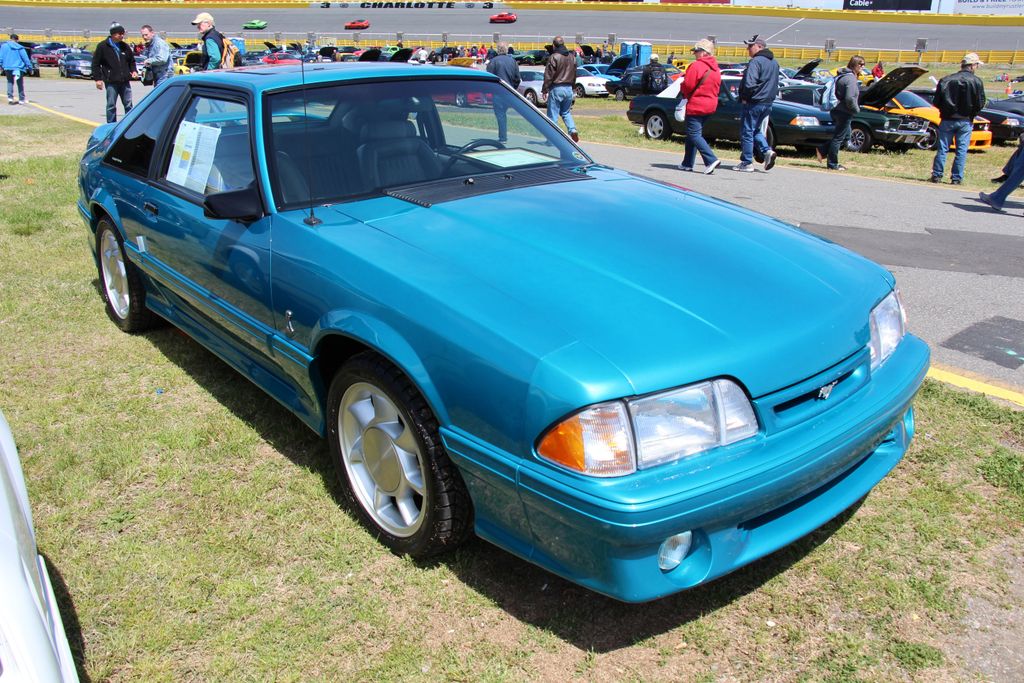
4. **1992–1993 SVT Mustang Cobra & Cobra R**The advent of Ford’s Special Vehicle Team (SVT) in 1992 heralded a transformative new era for factory-sanctioned performance within the revered Fox-body Mustang lineage. The 1992–1993 SVT Mustang Cobra emerged as a meticulously refined iteration of the classic 5.0L formula, elevating its capabilities and setting a new benchmark. Yet, it was the even rarer Cobra R that truly pushed the boundaries, shedding essential weight and focusing purely on achieving track dominance, embodying Ford’s unwavering commitment to performance.
Under the hood, the Cobra featured a High-Output 5.0L small block V8 engine, producing approximately 235 horsepower, thanks to subtly modified heads and an optimized intake system. This was a significant step up for the Mustang, offering enthusiasts a more potent and responsive driving experience. The Cobra R, however, was a different beast entirely. It was conceived as a no-compromise, race-focused machine, famously stripping out non-essential components such as the rear seats, radio, and even air conditioning, all in the relentless pursuit of speed and superior handling on the track.
Production numbers underscore the extreme rarity of these models: 4,993 Cobra hatchbacks were built for 1993, but an astonishingly mere 107 Cobra R models ever saw the light of day. Their performance was respectable for a mid-sized 1990s coupe, achieving quarter-mile times in the low 14s. Enthusiasts deeply revere these SVT Cobras for their pivotal role in bridging the gap between old-school pushrod power and contemporary electronic fuel injection (EFI) and advanced chassis upgrades. The Cobra R, in particular, remains a true unicorn—a limited-production pony car built solely for hardcore drivers, a blueprint that powerfully sparked the development of future track-oriented Mustangs from Ford.
Car Model Information: 2023 GMC Sierra 1500 Denali
Caption: 2004 Ford Mustang SVT Cobra
Name: Ford SVT Mustang Cobra
Manufacturer: Special Vehicle Team
Production: 1993–2004 (79,958 produced)
Class: Pony car
BodyStyle: 1993:,hatchback,coupe,convertible
Successor: Shelby Mustang#2007.E2.80.932009 Ford Shelby GT500
Platform: Ford Fox platform
Layout: Front-engine, rear-wheel drive layout
Categories: 2000s cars, All articles with specifically marked weasel-worded phrases, Articles with short description, Articles with specifically marked weasel-worded phrases from July 2025, Cars introduced in 1993
Summary: The Ford SVT Mustang Cobra (also known as “SVT Mustang Cobra, SVT Cobra,” or simply as “Cobra”) is a pony car that was built by American automobile manufacturer Ford Motor Company’s Special Vehicle Team division (or SVT) for the 1993 to 2004 model years.
The SVT Cobra was a high-performance version of the Ford Mustang and was considered the top-of-the-line variant, being positioned above the Mustang GT and Mach 1 models during its production run. On three occasions, the race-ready, street-legal SVT Cobra R variant was produced in limited numbers.
The SVT Cobra was succeeded by the Mustang Shelby GT500 which was introduced for the 2007 model year.
Get more information about: Ford Mustang SVT Cobra
Buying a high-performing used car >>>
Brand: Ford Model: Mustang Cobra
Price: $61,999 Mileage: 17,877 mi.

5. **1992–1995 Ford Taurus SHO (Manual Versions)**When the Ford Taurus first graced the automotive market in the mid-1980s, it completely revolutionized the family sedan segment with its innovative design and widespread appeal. However, Ford then unleashed a truly unexpected gem: the Super High Output (SHO) variant. This wasn’t merely a performance package; it was a sophisticated sleeper sedan, co-developed with the renowned Yamaha, that packed a serious punch beneath its unassuming exterior, demonstrating a novel approach to combining practicality with performance.
The heart of the manual version SHO was a sophisticated 3.0L DOHC V6 engine, which revved exhilaratingly to around 7,000 rpm, producing approximately 220 horsepower. Later models intended for automatic transmissions featured a 3.2L engine, but it was the original 5-speed manual transmission that truly offered a surprisingly sporty and engaging feel within the confines of what was considered a mainstream family sedan. This manual option provided a direct, visceral connection to the car’s dynamic capabilities, distinguishing it from its more common counterparts.
Manual-transmission SHOs, while lauded by enthusiasts, were never huge sellers, often overshadowed by the more ubiquitous family configurations of the Taurus line. Yet, their performance was undeniable, achieving 0-60 mph times in the mid-6-second range, which allowed them to handily outrun many V8 coupes of the day. The SHO powerfully proved that a family sedan could indeed be both sporty and eminently practical, laying crucial groundwork for future performance sedans in the American market. While it may not always be widely recognized as a traditional “muscle” car, the manual Taurus SHO is undeniably a cherished gem for enthusiasts who value stealth performance, refined engineering, and an incongruous appeal that has only grown with time. These un-crumpled, clean examples are now considered rare and highly desirable, their prices steadily climbing as collectors wise up to their unique charm.
Car Model Information: 2018 Ford Taurus Limited
Name: Ford Taurus
Caption: 2010 Ford Taurus Limited
Manufacturer: Ford Motor Company
Production: October 1985 – October 2006,May 2007 – March 2019
ModelYears: 1986–2019 (2007 sold only to fleets)
Class: Mid-size car
Layout: Transverse engine,front-engine, front-wheel drive,Transverse engine,front-engine, all-wheel drive
Predecessor: Ford LTD (North America)
Successor: Ford Taurus X
Categories: 1980s cars, 1990s cars, 2000s cars, 2010s cars, All-wheel-drive vehicles
Summary: The Ford Taurus is an automobile that was manufactured and marketed by the Ford Motor Company in the United States from 1985 to 2019. From 1985 to 2009, Ford marketed the Taurus alongside its rebadged variant, the Mercury Sable. Four generations of the high-performance version (named the Ford Taurus SHO) were also manufactured from 1988-1999 and 2009-2019.
The original Taurus was a milestone for Ford and the American automotive industry, as the first automobile at Ford designed and manufactured using the statistical process control ideas brought to Ford by W. Edwards Deming, a prominent statistician consulted by Ford to bring a “culture of quality” to the enterprise. The Taurus had an influential design that introduced new features and innovations.
In the late 1990s and early 2000s, sales of the Taurus declined as it lost market share to Japanese mid-size sedans and as Ford shifted resources towards developing SUVs. The Taurus was withdrawn after the 2007 model year, with production ending on October 27, 2006. As part of a model line revision, the Taurus and the larger Ford Crown Victoria were to be replaced with the full-size Five Hundred and mid-size Fusion sedans; the Taurus station wagon was replaced with the Ford Freestyle wagon, branded as a crossover SUV. During the 2007 Chicago Auto Show, the nameplates of the Taurus and Sable were revived, intended as 2008 mid-cycle revisions of the Five Hundred. The Freestyle was renamed the Ford Taurus X. For the 2010 model year, Ford introduced the sixth-generation Taurus, marking a more substantial model update, alongside the revival of the Taurus SHO; in 2013, the Ford Police Interceptor Sedan was introduced as a successor for its long-running Crown Victoria counterpart.
From 1985 to 2007, the Taurus was a mid-size car, offering front-wheel drive. Initially built on the DN5 platform (renamed the DN101 platform in 1995 and the D186 platform in 1999), the Taurus became a full-size car in 2007, adopting the Volvo-derived D3 platform, offering front- or all-wheel drive. The Taurus was produced as a four-door sedan through its entire production, with a five-door station wagon offered from 1986 to 2005.
All generations of the Taurus were assembled by Chicago Assembly on Chicago’s South Side. Prior to its 2006 closure, Atlanta Assembly also produced both the Taurus and Sable. From its 1985 launch to its initial withdrawal following the 2007 model year, Ford assembled 7,519,919 examples of the Taurus. The fifth best-selling Ford nameplate in North America, the Taurus has been surpassed only by the F-Series, Escort, Model T, and Mustang. Between 1992 and 1996, the Taurus was the best-selling car nameplate in the United States, overtaken by the current title holder in 1997, the Toyota Camry.
Get more information about: Ford Taurus
Buying a high-performing used car >>>
Brand: Ford Model: Taurus
Price: $17,317 Mileage: 92,680 mi.
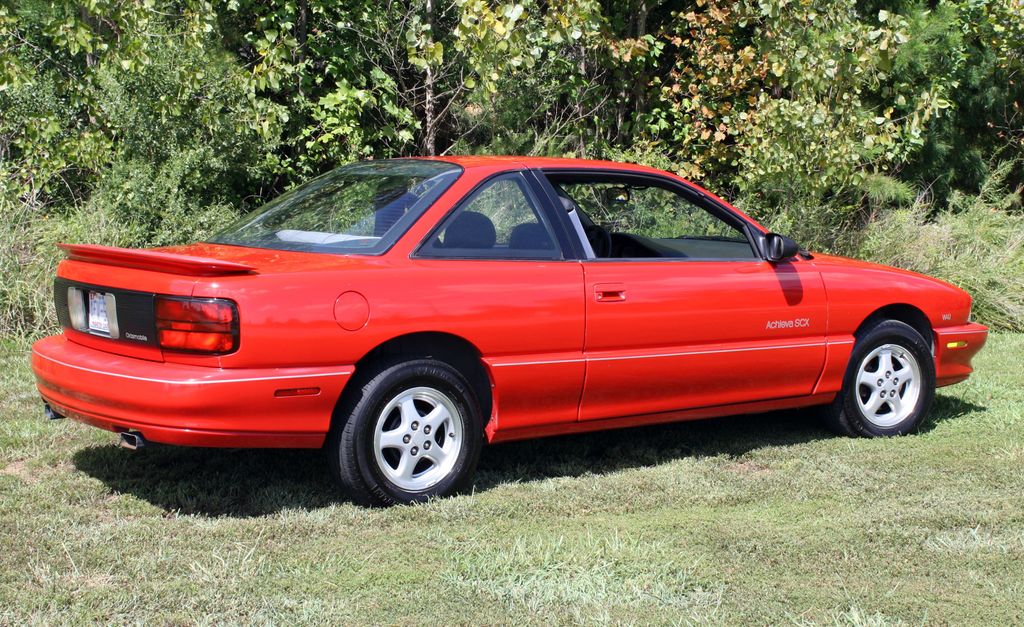
6. **1992–1995 Oldsmobile Achieva SCX W41**Oldsmobile’s unexpected foray into performance during the 1990s found its spirited culmination in the Achieva SCX, a vehicle that perfectly embodies the diverse engineering experiments taking place. This rare, front-wheel-drive coupe, though often overlooked and rarely seen, was born from a very specific and ambitious purpose: to homologate Oldsmobile’s endeavors in SCCA racing. It represented a determined push to extract every ounce of performance from four-cylinder technology, signaling that American manufacturers were willing to explore beyond conventional V8 dominance in their pursuit of speed.
At its core, the Achieva SCX W41 featured a remarkably potent 2.3L Quad 4 engine with dual overhead camshafts, producing approximately 190 horsepower. For a small displacement engine of its time, this output was nothing short of exceptional, showcasing a marvel of engineering for its day. Beyond the engine, Oldsmobile implemented a series of crucial chassis tweaks, including enhanced suspension components, uprated brakes, and a unique gearing setup, all meticulously designed for track readiness. These modifications transformed the humble Achieva into a nimble, high-revving machine capable of surprising much larger and supposedly more powerful rivals in autocross events, cementing its unique place in performance history.
With fewer than 1,000 total SCX W41 models ever produced, its rarity is underscored by its limited purpose and the fact that it was often overshadowed by Oldsmobile’s more mainstream offerings. The Achieva SCX W41 stands as a fascinating piece of limited-production lore, a quiet testament to GM’s often-unsung willingness to chase SCCA dominance during an era of significant powertrain diversification. Its very existence highlights the 1990s’ broader push to refine small-displacement, high-output engines, signaling a shift in how American performance was defined and achieved. For collectors, finding one of these is like discovering a hidden gem, a true connoisseur’s choice.
Car Model Information: 2023 GMC Sierra 1500 Denali
Name: Oldsmobile Achieva
Manufacturer: Oldsmobile
Production: 1991–1997
ModelYears: 1992–1998
Class: Compact car
Layout: Front-engine, front-wheel-drive layout
Platform: GM N platform
BodyStyle: coupe
Predecessor: Oldsmobile Cutlass Calais
Successor: Oldsmobile Alero
Engine: ubl
Assembly: Lansing, Michigan
Transmission: Turbo-Hydramatic 125,automatic transmission
Related: Buick Skylark,Pontiac Grand Am,Chevrolet Corsica,Chevrolet Beretta
Wheelbase: 103.4 in
Abbr: on
Length: 187.9 in
Width: 67.5 in
Height: 53.2 in
Designer: Gary Smith
Categories: All articles needing additional references, All articles with unsourced statements, Articles needing additional references from December 2024, Articles with short description, Articles with unsourced statements from January 2025
Summary: The Oldsmobile Achieva is a front-wheel drive compact sedan and coupe that was introduced by Oldsmobile for the 1992 model year. The Achieva was based on the GM N-body platform, which it also shared with its siblings the Pontiac Grand Am and Buick Skylark. The Achieva replaced the GM N-body Cutlass Calais after its final 1991 model year, and ended production after the 1998 model year.
Get more information about: Oldsmobile Achieva
Buying a high-performing used car >>>
Brand: Oldsmobile Model: Achieva SCX
Price: $61,999 Mileage: 17,877 mi.
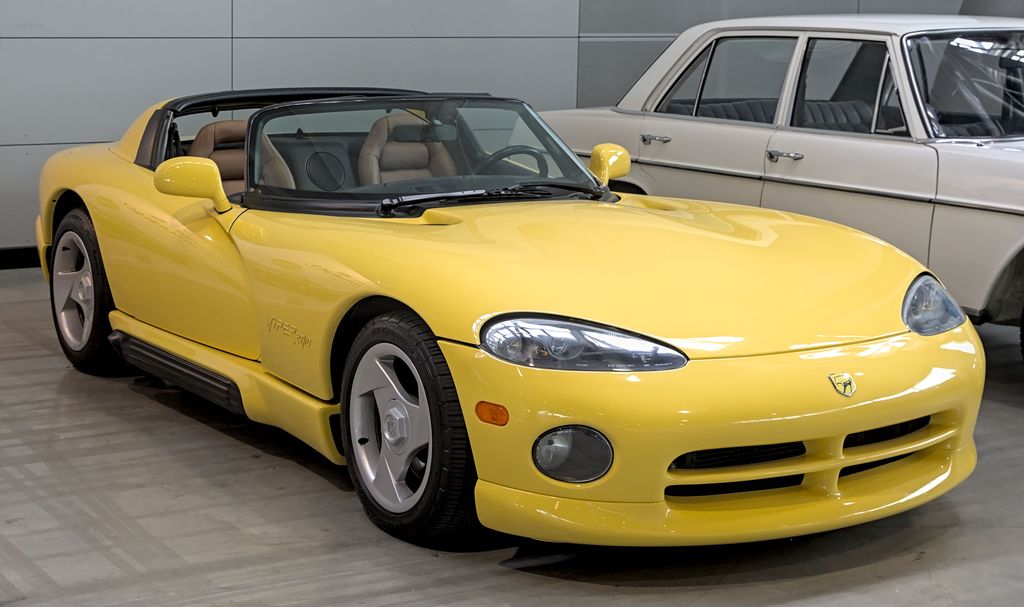
7. **1993 Dodge Viper RT/10 (Gen 1)**In a decade increasingly defined by electronic sophistication and advanced safety features, Chrysler dared to unleash something gloriously anachronistic and utterly raw: the 1993 Dodge Viper RT/10. This first-generation Viper was conceived as a bare-bones supercar, a modern homage to the untamed, visceral spirit of the legendary Shelby Cobra. It was an open-top roadster propelled by a colossal V10 engine, stripped down to its essentials with no roof, no anti-lock brakes (ABS), and minimal, if any, driver aids. The Viper was an unapologetic mechanical beast, demanding the full attention and skill of its driver—a stark contrast to the burgeoning trends of the time.
At the heart of this beast resided an enormous 8.0-liter V10 engine, a power plant of truly epic proportions. This massive engine delivered around 400 horsepower and an even more impressive 465 lb-ft of torque, providing neck-snapping acceleration that could pin occupants deep into their seats. The Viper’s construction further emphasized its performance-first philosophy, featuring a lightweight tube-frame chassis adorned with composite body panels and, famously, aggressive side-exit exhausts that bellowed a menacing soundtrack. Its blistering 0-60 mph sprint times, hovering near the 4-second mark, placed it firmly in the rarefied air of contemporary supercars, making it an instant icon of American engineering prowess.
Production of the Gen 1 Viper was initially quite limited, with just over 200 units built for the 1992 model year, followed by a modest ramp-up in subsequent years. This scarcity, combined with its uncompromising performance pedigree, quickly established the Viper RT/10 as a halo car for the Chrysler brand, demonstrating American automotive muscle on a global stage. These rare early builds have seen their collector value soar dramatically, as enthusiasts and collectors alike appreciate them as pure, raw, and utterly unapologetic performance icons. The Gen 1 Viper isn’t just a car; it’s a testament to audacious design and an unwavering commitment to unbridled power.
Car Model Information: 2023 GMC Sierra 1500 Denali
Name: Dodge Viper (SR I)
Production: 1991–1995
ModelYears: 1992–1995
Assembly: New Mack Assembly,Detroit,Michigan
Designer: Tom Gale (designer)
Class: Sports car
BodyStyle: Targa top
Engine: Viper engine#First generation,V10 engine
Powerout: 400 hp
Abbr: on
Transmission: BorgWarner,Borg-Warner_T-56_transmission,manual transmission
Wheelbase: 2446 mm
Length: 4450 mm
Width: 1920 mm
Height: 1120 mm
Weight: 1490 kg
Successor: Dodge Viper (SR II)
Layout: FR layout
Related: Rinspeed Veleno
Aka: Chrysler Viper (Europe)
Categories: Articles with short description, Cars discontinued in 1995, Cars introduced in 1992, Dodge vehicles, Short description matches Wikidata
Summary: The Dodge Viper (SR I) is the first-generation Viper sports car, manufactured by American automobile manufacturer Dodge. It was originally tested in January 1989 as a prototype, then later introduced in 1991 as a pace car for the Indianapolis 500, then finally going on sale in January 1992.
The SR I began the Dodge Viper model lineup, which would continue on until 2017, consisting of five generations.
The SRI was replaced by the updated SRII after a series of updates in 1995.
Get more information about: Dodge Viper (SR I)
Buying a high-performing used car >>>
Brand: DODGE Model: VIPER RT/10
Price: $61,999 Mileage: 17,877 mi.
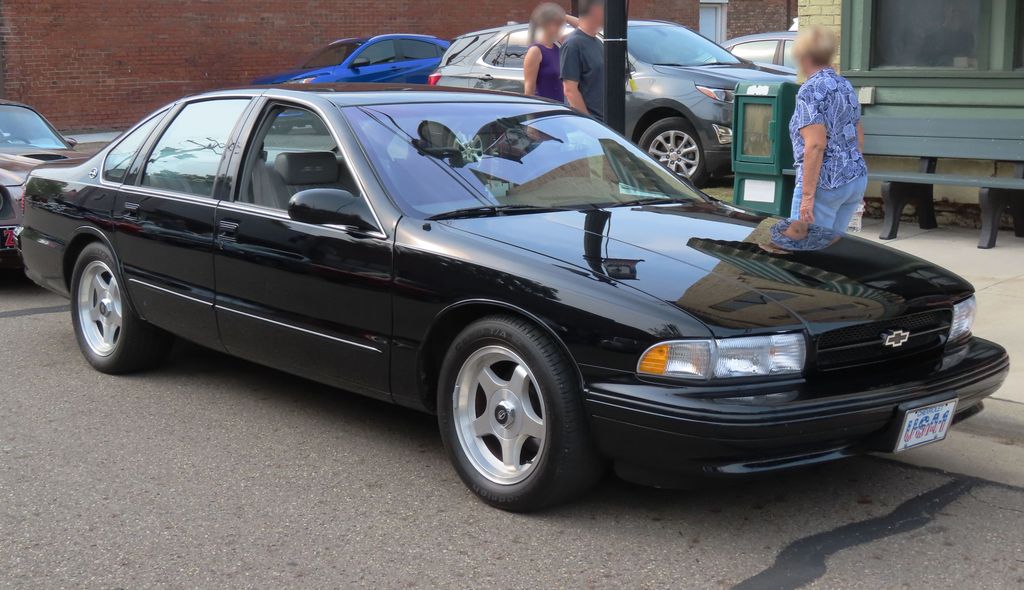
8. **1994–1996 Chevrolet Impala SS**The mid-1990s witnessed a triumphant return of an iconic nameplate with the 1994–1996 Chevrolet Impala SS, a vehicle that masterfully merged muscle car bravado with the practicality of a full-size sedan. Chevrolet took the robust, body-on-frame platform of the Caprice, a car typically associated with police fleets and family duties, and injected it with a serious dose of performance. The result was a sleeper sedan that quickly captivated buyers looking for potent power discreetly wrapped in a stealthy, four-door package. It defied expectations, proving that a large American sedan could indeed be a formidable performance machine.
Powering this modern legend was the revered 5.7L LT1 V8 engine, a unit shared with the Corvette and Camaro of the era, which produced a healthy 260 horsepower and ample torque. But the Impala SS wasn’t just about straight-line speed; its dynamic capabilities were significantly enhanced by heavy-duty suspension tuning and upgraded brakes, components notably borrowed from the police-package Caprices, ensuring robust handling and stopping power for its substantial size. This comprehensive performance package allowed the large sedan to achieve impressive low 15-second quarter-mile times, a revelation for a vehicle of its stature and a clear statement of its sporting intent.
Built for only three short model years, the 1994–1996 Impala SS always carried an air of exclusivity, with black being the most iconic and frequently chosen color, though dark gray green and dark cherry metallic were also offered to discerning buyers. Many automotive enthusiasts consider this iteration of the Impala SS to be the “last great” body-on-frame, rear-wheel-drive American sedan, a powerful closing chapter to an era of large, V8-powered family haulers. Today, well-preserved examples continue to attract a passionate cult following, their values steadily climbing as collectors seek to own a piece of this unique blend of performance, practicality, and enduring American automotive heritage.
Car Model Information: 2023 GMC Sierra 1500 Denali
Name: Chevrolet Impala
Caption: Fourth generation model (1967)
Manufacturer: Chevrolet
Production: 1957–1985,1994–1996,1999–2020
ModelYears: 1958–1985,1994–1996,2000–2020
Predecessor: Chevrolet Bel Air,Chevrolet Lumina#Second generation (1995–2001)
Successor: Chevrolet SS,Chevrolet Caprice
Platform: GM B platform,GM W platform,GM W platform (GMX211) (2005–2013),GM Epsilon platform#Epsilon II
Class: Full-size car,Mid-size car
Layout: Front-engine, rear-wheel-drive layout,Front-engine, front-wheel-drive layout
Categories: 1960s cars, 1970s cars, 1980s cars, 1990s cars, 2000s cars
Summary: The Chevrolet Impala () is a full-size car that was built by Chevrolet for model years 1958 to 1985, 1994 to 1996, and 2000 to 2020. The Impala was Chevrolet’s popular flagship passenger car and was among the better-selling American-made automobiles in the United States.
For its debut in 1958, the Impala was distinguished from other models by its symmetrical triple taillights. The Chevrolet Caprice was introduced as a top-line Impala Sport Sedan for model year 1965, later becoming a separate series positioned above the Impala in 1966, which, in turn, remained above the Chevrolet Bel Air and the Chevrolet Biscayne. The Impala continued as Chevrolet’s most popular full-sized model through the mid-1980s. Between 1994 and 1996, the Impala was revised as a 5.7-liter V8–powered version of the Chevrolet Caprice Classic sedan.
In 2000, the Impala was reintroduced again as a mainstream front-wheel drive car. In February 2014, the 2014 Impala ranked No. 1 among Affordable Large Cars in U.S. News & World Report’s rankings. When the 10th generation of the Impala was introduced for the 2014 model year, the 9th generation was rebadged as the Impala Limited and sold only to fleet customers through 2016. During that time, both versions were sold in the United States and Canada. The 10th-generation Impala was also sold in the Middle East and South Korea.
Get more information about: Chevrolet Impala
Buying a high-performing used car >>>
Brand: Chevrolet Model: Impala SS
Price: $61,999 Mileage: 17,877 mi.
Read more about: Unleash the Roar: 15 Affordable Muscle Cars for Middle-Class Enthusiasts and Budget Collectors
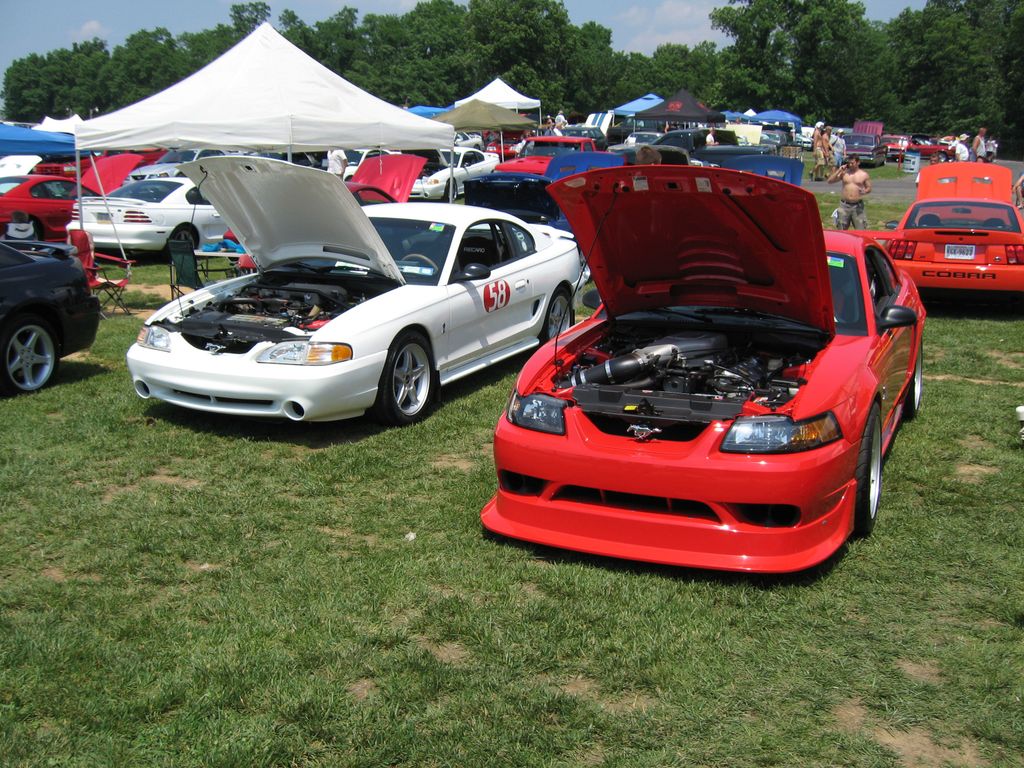
9. **1995 Ford Mustang SVT Cobra R**Building upon the legacy of the Fox-body SVT models, Ford’s Special Vehicle Team once again elevated the Mustang’s performance capabilities with the introduction of the 1995 Ford Mustang SVT Cobra R. As part of the new SN-95 generation, this iteration of the Cobra R maintained its predecessor’s core philosophy: to be a fiercely stripped-down, track-focused machine. However, the 1995 model took the concept even further by boasting a larger displacement engine, promising an even more significant punch for discerning track enthusiasts and serious collectors. It was a clear, uncompromising declaration of Ford’s commitment to high-performance driving.
Under the hood, this formidable pony car housed a robust 5.8L Windsor V8 engine, a significant upgrade over the standard Cobra’s 5.0L unit. This larger engine was factory-rated at around 300 horsepower, a notable jump that provided exhilarating acceleration and power. True to its “R” designation, the 1995 Cobra R was relentlessly engineered for weight reduction and track superiority. Non-essential components such as the rear seat, radio, and even the air conditioning system were deliberately omitted, epitomizing a race-focused minimalism. Every design choice was geared towards maximizing performance and handling on the circuit, ensuring that this Mustang was truly built for speed.
The extreme rarity of the 1995 SVT Cobra R is highlighted by its remarkably limited production run of just 250 units. Each of these exclusive vehicles left the factory wearing a distinctive white paint job complemented by a saddle interior, making them instantly recognizable and highly coveted. In stock trim, these machines were capable of achieving impressive high 13-second quarter-mile times, effectively overshadowing many contemporary sports cars of the era. The 1995 Cobra R stands as a definitive signal of Ford’s unwavering dedication to producing track-worthy Mustangs, serving as a powerful blueprint for future limited-run, high-performance models like the 2000 Cobra R and the modern Shelby GT350R. Collectors worldwide covet these cars not only for their inherent rarity but also for their purposeful construction and pivotal role in the evolution of the Mustang’s performance lineage.
Car Model Information: 2023 GMC Sierra 1500 Denali
Caption: 2004 Ford Mustang SVT Cobra
Name: Ford SVT Mustang Cobra
Manufacturer: Special Vehicle Team
Production: 1993–2004 (79,958 produced)
Class: Pony car
BodyStyle: 1993:,hatchback,coupe,convertible
Successor: Shelby Mustang#2007.E2.80.932009 Ford Shelby GT500
Platform: Ford Fox platform
Layout: Front-engine, rear-wheel drive layout
Categories: 2000s cars, All articles with specifically marked weasel-worded phrases, Articles with short description, Articles with specifically marked weasel-worded phrases from July 2025, Cars introduced in 1993
Summary: The Ford SVT Mustang Cobra (also known as “SVT Mustang Cobra, SVT Cobra,” or simply as “Cobra”) is a pony car that was built by American automobile manufacturer Ford Motor Company’s Special Vehicle Team division (or SVT) for the 1993 to 2004 model years.
The SVT Cobra was a high-performance version of the Ford Mustang and was considered the top-of-the-line variant, being positioned above the Mustang GT and Mach 1 models during its production run. On three occasions, the race-ready, street-legal SVT Cobra R variant was produced in limited numbers.
The SVT Cobra was succeeded by the Mustang Shelby GT500 which was introduced for the 2007 model year.
Get more information about: Ford Mustang SVT Cobra
Buying a high-performing used car >>>
Brand: Ford Model: Mustang SVT Cobra R
Price: $61,999 Mileage: 17,877 mi.
Read more about: The 18 Fastest Fords Ever Built: From Muscle Cars to EVs
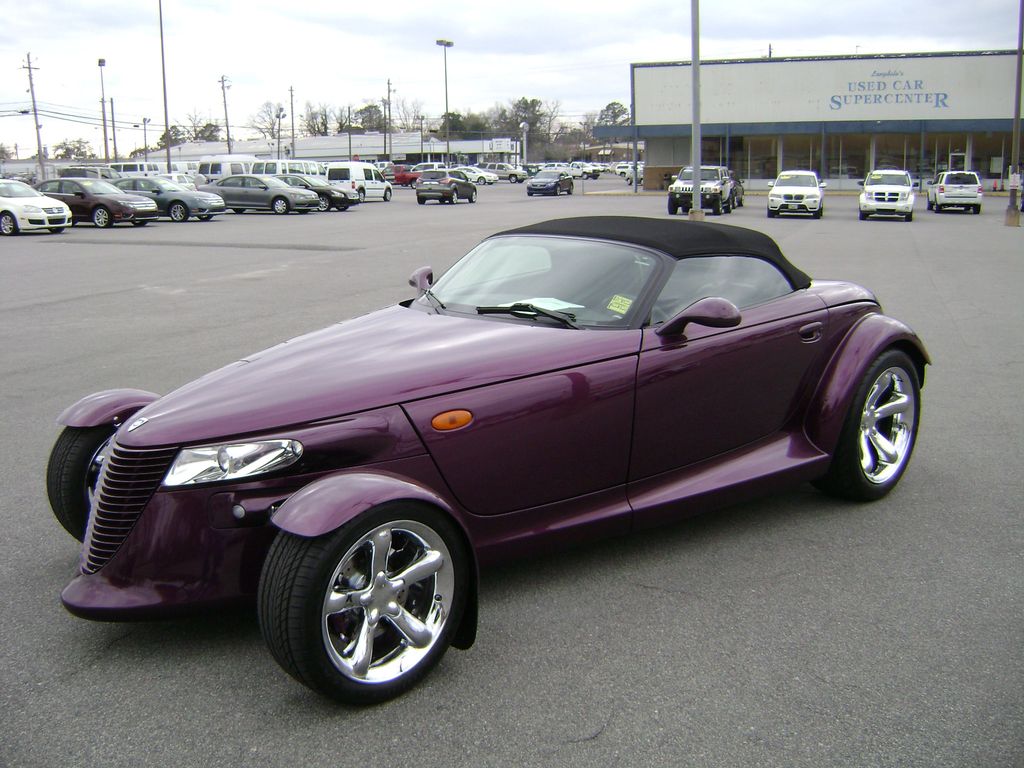
10. **1997 Plymouth Prowler**As the 1990s drew to a close, Chrysler showcased its audacious design bravado with a vehicle that seemed to leap directly from a concept sketch onto the production line: the 1997 Plymouth Prowler. This distinctive roadster borrowed heavily from classic hot-rod design cues, featuring exposed front wheels, exaggerated fenders, and a uniquely retro-futuristic aesthetic that made it an undeniable statement piece. It was less about brute force and more about visual impact and engineering ingenuity, a testament to Chrysler’s willingness to push stylistic boundaries during a period of evolving automotive tastes.
Despite its hot-rod appearance, the Prowler was powered by a more contemporary 3.5L SOHC V6 engine, which produced between approximately 214 and 253 horsepower depending on the model year. This engine was mated to a 4-speed automatic transmission that featured an “Autostick” manual mode, offering a nod to driver engagement even without a traditional manual gearbox. A groundbreaking aspect of the Prowler’s construction was its extensive use of aluminum in both the frame and body panels. This lightweight material choice was a significant engineering feat for a mainstream production car of the time, hinting at future applications of advanced materials in the broader automotive industry.
Production numbers for the Prowler were modest, with approximately 3,921 units produced under the Plymouth badge in 1997 and 1999, with additional units later produced under the Chrysler brand after 2001. This niche production volume ensures its continued rarity and desirability among collectors. The Plymouth Prowler, while not a traditional muscle car in the vein of a V8-powered beast, stands out at any car show or gathering as an undeniable icon of 1990s automotive design. It perfectly encapsulates the era’s push toward expressive, limited-production vehicles that prioritized unique styling and forward-thinking construction methods, making it a truly special and visually striking collectible.
**The 1990s: Bridging Old and New**
The 1990s, often perceived as a period of automotive transition, truly blossomed into a remarkable decade for American car innovation and performance. As we’ve journeyed through these ten rare and exceptional vehicles, it becomes abundantly clear that this era was far from a quiet interlude; it was a vibrant crucible where the raw, unbridled power of classic American muscle met the burgeoning sophistication of modern technology. From the track-honed precision of an SVT Cobra R to the unapologetic, V10 roar of a first-generation Viper, and even the audacious, concept-car styling of the Plymouth Prowler, each machine on this list stands as a testament to American automakers’ daring spirit.
This was a time when the very definition of performance broadened. While the 1980s may have laid the groundwork with new engineering frameworks, the 1990s saw those foundational ideas flourish, resulting in a thrilling diversity of high-output machines. Horsepower figures steadily climbed, handling dynamics sharpened significantly, and new forms of electronic sophistication allowed previously radical ideas—like widespread turbocharging, dual overhead camshaft engines, and advanced fuel injection—to become the new normal. This powerful synergy didn’t just redefine the decade; it meticulously paved the road for the explosive muscle renaissance of the 2000s, unequivocally proving that American automakers had not only adapted to the times but had also impressively regained their competitive edge in performance and design innovation.
Car Model Information: 1997 Plymouth Prowler
Name: Plymouth Prowler
Manufacturer: Chrysler Corporation
Production: 1997–2002,11,702 produced
Assembly: Detroit, Michigan
Class: Sports car
Layout: Front-engine, rear-wheel-drive layout#Front mid-engine, rear-wheel-drive layout
Platform: Chrysler PR platform
BodyStyle: Roadster (automobile)
Engine: Chrysler SOHC V6 engine#3.5,V6 engine
Transmission: Ultradrive#A606/42LE,automatic transmission
Aka: Chrysler Prowler (2000–2002)
Wheelbase: 113.3 in
Abbr: on
Length: 165.3 in
Width: 76.5 in
Height: 50.9 in
Weight: 2800 lb
Successor: Chrysler Crossfire
Designer: Tom Gale (designer)
Caption: 2000 Plymouth Prowler
Categories: 2000s cars, All articles needing additional references, Articles needing additional references from November 2015, Articles with short description, Cars introduced in 1997
Summary: The Plymouth Prowler, later the Chrysler Prowler, is a two-door, two passenger sports car, manufactured and marketed by DaimlerChrysler for model years 1997-2002 — widely known for its hand-crafted aluminum bodywork and its retro-hot rod styling with open, Indy racer-style front wheels.
Based on the 1993 concept car of the same name, Chrysler offered the Prowler over a single generation, with a V6 front-engine, and a rear-transaxle, rear-drive configuration — reaching a total production of 11,702 units.
Get more information about: Plymouth Prowler
Buying a high-performing used car >>>
Brand: Plymouth Model: Prowler
Price: $34,993 Mileage: 9,424 mi.
Read more about: Are These The 16 Ugliest Cars Ever? See The List
These rare gems, once cutting-edge and now highly coveted, are more than just collector’s items; they are tangible pieces of automotive history. Spotting one of these vehicles today, whether at a specialized enthusiast meet or gleaming under the lights of a collector car auction, offers a unique opportunity to connect with an era that fearlessly bridged the gap between old-school grit and new-world ingenuity. They remind us that what might have seemed experimental or niche in the 1990s often laid the crucial groundwork for the incredible performance booms we all enjoy in modern times. So, the next time you encounter one of these distinctive machines, take a moment to appreciate its profound contribution to the enduring, evolving story of American horsepower, technology, and undeniably bold design. Their legacy continues, inspiring new generations of automotive passion.



